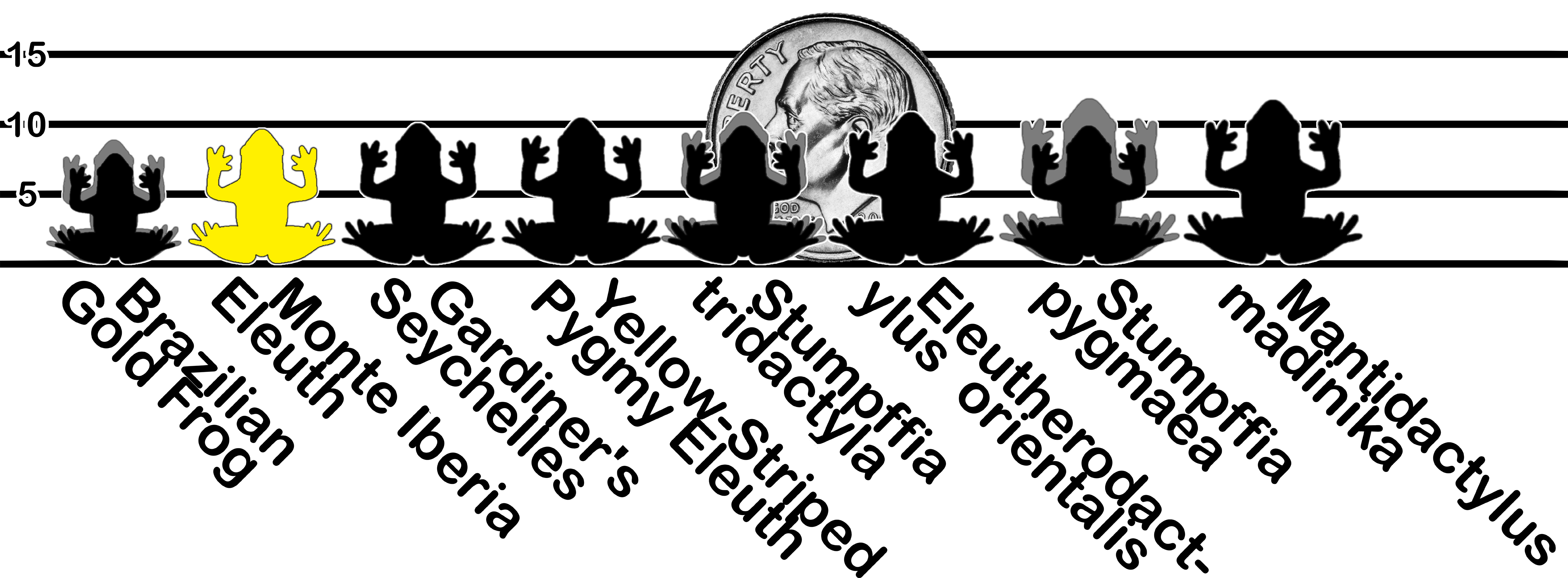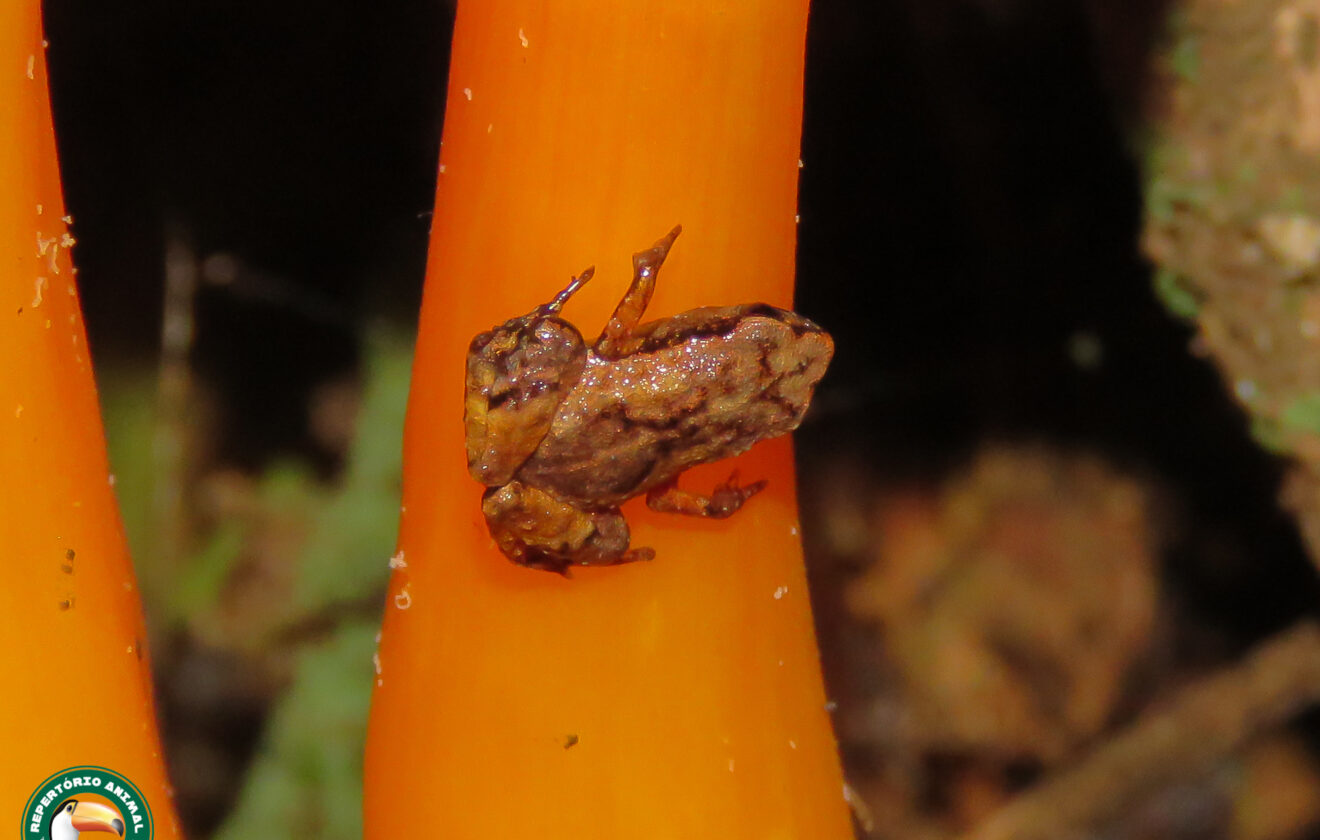Tiny Jewel of the Rainforest: Unveiling the Mysteries of Brachycephalus didactylus#
Hidden away beneath lush rainforest foliage, among twisted roots and soft layers of leaf litter, lives a creature so minute it could perch comfortably upon your thumbnail. This delicate, golden-hued animal, the Brazilian Gold Frog (Brachycephalus didactylus), holds the astounding reputation of being one of the smallest frogs on Earth. Yet beyond its diminutive size lies a captivating world shaped by evolutionary marvels and ecological importance. In the vibrant rainforests of Brazil, nestled quietly amid the earthy scent of organic decay and the chorus of nocturnal insects, Brachycephalus didactylus thrives unnoticed, a tiny guardian whose very existence speaks volumes about biodiversity, resilience, and the intricate connections intrinsic to forest ecosystems. Let us journey deep into the realm of this remarkable amphibian and discover what makes this miniature marvel so extraordinary.
Taxonomy and Classification#
The Brazilian Gold Frog, scientifically named Brachycephalus didactylus, is a member of the family Brachycephalidae, a lineage of neotropical frogs known for their remarkably small size, vibrant colors, and unique skeletal structures. The genus Brachycephalus comprises more than 30 intriguing species, all endemic to specific regions of Brazil’s Atlantic Forest. Distinguished largely by their miniature stature and brilliantly colored appearance, species within this genus are evolutionary miracles shaped by isolation, mountain barriers, and specialized ecological niches.
Brachycephalus didactylus itself occupies a special place within its genus as one of the smallest creatures known to science. “Didactylus” — literally meaning “two fingers” — references the species’ distinctive limb anatomy, characterized by tiny limbs with just two functioning digits, an adaptation intricately linked to its terrestrial, leaf-litter-dwelling habits.
Natural Habitat#
To experience the secretive world of Brachycephalus didactylus, one must venture into the verdant expanses of Brazil’s Atlantic Rainforest, a biodiversity hotspot teeming with life from towering trees to microscopic organisms. Specifically, this species inhabits the humid lowland forests along Brazil’s southeastern coast, including regions of Espírito Santo, Rio de Janeiro, São Paulo, and Paraná. Critically tied to pristine Atlantic Forest habitat, it favors areas with abundant leaf litter, moss-covered logs, dense undergrowth, and high humidity.
Descending closer to the forest floor beneath the dense canopy, the atmosphere grows cooler and heavier with moisture. Here, the landscape unveils itself as a mosaic of carefully interwoven microhabitats. Leaf litter becomes far more than decomposing plant material—it transforms into a complex living network, sheltering countless insects, founding fungi, microbes, and, importantly, minute frogs. Within this hidden microcosm, B. didactylus navigates its world with practiced ease, securing refuge under layered leaf litter during the day and emerging quietly at dusk to traverse short distances and hunt tiny prey.
Physical Characteristics#
The first glance at this extraordinary species may leave observers captivated by both its bright coloration and almost unimaginably small stature. Adult Brazilian Gold Frogs measure little more than 8 to 10 millimeters in length—single individuals could comfortably rest upon human thumbnails. Their tiny bodies seem dipped in shades of vibrant golden-orange or golden-yellow hues, providing a striking contrast to the dark browns, greens, and earthy tones of their natural habitat.
Examining the frog’s minute form closely reveals more unique traits: astonishingly shortened limbs ending with just two functional toes. This adaptation illustrates precisely how evolution has shaped the species to thrive in its leaf-litter world—two short, sturdy digits offer practical movement and digging capability without the unnecessary complexity of larger digits. Their smooth, glossy skin not only reflects humidity, easing water retention through microclimatic moisture balance but also provides a certain sheen that may contribute to predator deterrence or mate attraction. Such vivid coloration suggests aposematic signaling—warning potential predators of potential toxicity or unpalatable qualities.
Behavior and Life Cycle#
Despite its minuscule size, the secretive Brazilian Gold Frog sustains a very active, albeit discreet, existence. Primarily crepuscular and nocturnal, these elusive frogs spend daylight hours secreted within moist leaf litter, underneath logs, or hidden in soil crevices. Under cover of darkness, especially after rain showers, they cautiously venture out toward prey-dense pathways.
Diet and Feeding Habits#
Feeding predominantly on microscopic insects, springtails, mites, and tiny arthropods abundant within leaf litter, Brachycephalus didactylus employs stealth and precise ambush techniques. Owing to their small stature and slow metabolism, these frogs require only modest amounts of prey; nevertheless, their dietary strategy precisely matches prey availability within their habitat, illustrating remarkable evolutionary adaptation.
Reproduction and Development#
Seasonal rains mark the onset of breeding activities for the Brazilian Gold Frog, with males emitting high-pitched, insect-like calls to attract females among the dense undergrowth. Individual frogs gather in short-lived nuptial congregations beneath protective leaves or in tiny damp depressions, where males use persistent but gentle vibrational calls. The courtship culminates in terrestrial egg laying, bypassing the tadpole stage entirely—a process known as direct development.
Eggs are carefully hidden within damp spaces of leaf litter, enveloped securely within the moisture-rich environment. Developing independently within their protective eggs, these tiny embryos bypass a tadpole stage entirely, emerging as fully formed, miniature replicas of their parents. This fascinating reproductive strategy—common across small terrestrial frogs—eliminates reliance on standing water bodies, a valuable adaptation in humid forest environments prone to unpredictable hydrological fluctuations.
Ecological Role#
Though seemingly insignificant in size, Brachycephalus didactylus fulfils vital ecological functions within its rainforest habitat. Sitting at their unique niche within the leaf-litter food web, they primarily operate as insectivorous predators, helping maintain crucial ecological balance by controlling abundance among insects and microarthropods.
Meanwhile, their small stature marks them as potential prey for many larger predators, including insects, spiders, and other amphibians, thus providing sustenance for numerous forest inhabitants. Additionally, as indicator species sensitive to ecological disturbances—particularly habitat fragmentation, chemical pollutants, and climate shifts—the health and presence of the Brazilian Gold Frog directly reflect integrity within forest ecosystems.
Threats and Conservation Status#
Unfortunately, the delicate balance inhabited by Brachycephalus didactylus faces multiple threats, including drastic habitat loss primarily from deforestation, agricultural expansion, and urbanization encroachment. Climate change also exacerbates risks through alterations in humidity levels, precipitation patterns, and temperature variations in an already narrow niche of sensitivity.
Currently, the International Union for Conservation of Nature (IUCN) classifies the species as Least Concern due to its seemingly stable populations across a wide area—however, experts caution vigilance remains critical, given the rapid habitat deterioration across Brazil’s Atlantic coastal forests. Long-term population monitoring and habitat protection initiatives remain necessary, even for currently abundant amphibians, especially small-bodied, habitat-specialized creatures like these charismatic miniature frogs.
Cultural and Scientific Significance#
Beyond ecological importance, Brachycephalus didactylus holds cultural and scientific leverage. Locally, tiny frog species often inspire indigenous peoples and residents as symbolic expressions of healthy, vibrant environments. Scientifically, these tiny amphibians yield profound insights into evolutionary biology, adaptation, and ecological specialization. Undergoing intense study during the past decade, researchers uncover valuable data connecting habitat health indicators with amphibian populations, offering conservationists direct applications toward forest preservation strategies.
Conclusion: Why We Must Protect the Tiny Wonders#
Though easy to overlook amidst nature’s overwhelming wonders, tiny creatures such as Brachycephalus didactylus speak powerfully to life’s intricate interconnectedness. By preserving such delicate species, humanity ultimately protects entire ecosystems, maintaining biodiversity crucial for long-term planetary health.
As stewards of biodiversity, we gain not only ecological benefits but joy from the knowledge that somewhere beneath shadowy leaves, a golden jewel persists quietly, eloquently affirming that even nature’s smallest creatures hold tremendous significance. It falls to all nature enthusiasts, students, and conservation voices to champion protection of habitats, spread awareness, and help secure a lasting future for wonders like the Brazilian Gold Frog, enabling these fascinating micro-worlds to flourish undisturbed for countless generations to come.













